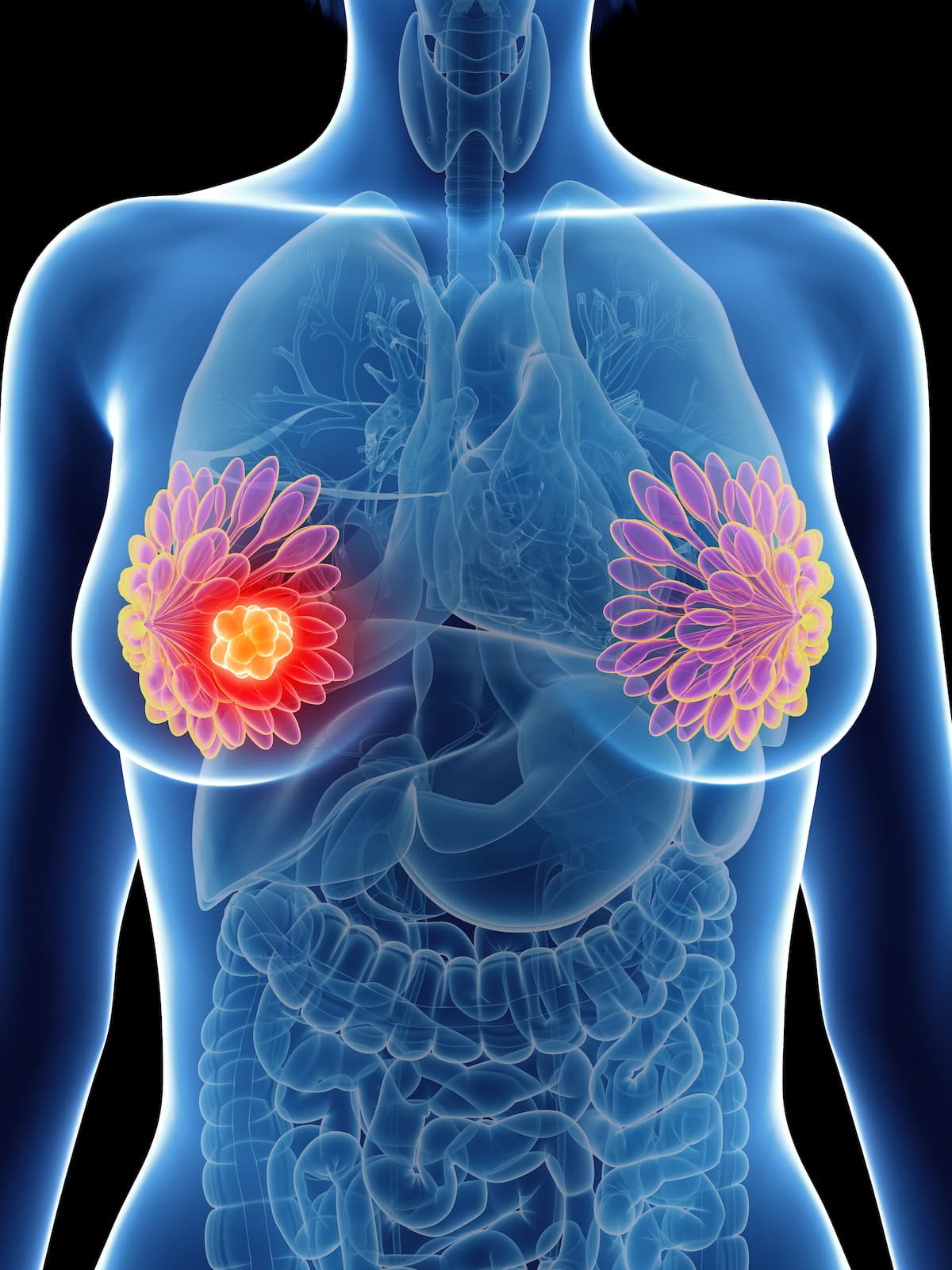Survival Outcomes Improve With TIL Presence in TNBC
An increased TIL count in the breast tissue was associated with improved distant recurrence-free survival in patients with triple-negative breast cancer.
“While the association of TIL levels with clinical outcomes in early-stage TNBC has been previously reported, in most studies, patients were exposed to chemotherapy, making it challenging to assess whether TIL levels were independently associated with prognosis or simply associated with greater chemotherapy responsiveness,” according to the authors.

Patients with early-stage triple-negative breast cancer (TNBC) who had breast tissue with more tumor-infiltrating lymphocytes (TIL) and did not receive adjuvant or neoadjuvant chemotherapy had significantly better survival, according to findings from a study published in JAMA.
The 5-year distant recurrence-free survival (DRFS) for stage I TNBC and a TIL level of 50% or more was 94% (95% CI, 91%-96%) vs 78% (95% CI, 75%-80%) for those with a TIL level less than 30%. For those with a TIL level of 50% or more, the 5-year overall survival rate (OS) was 95% (95% CI, 92%-97%), and for those with a TIL level of less than 30%, the OS rate was 82% (95% CI, 79%-84%).
“While the association of TIL levels with clinical outcomes in early-stage TNBC has been previously reported, in most studies, patients were exposed to chemotherapy, making it challenging to assess whether TIL levels were independently associated with prognosis or simply associated with greater chemotherapy responsiveness,” the authors wrote.
A total of 1966 patients were included in the analysis at a median follow-up of 18 years (95% CI, 15-20). At diagnosis, the median age was 56, and 41% of patients were younger than 50 years. Regarding tumor classification, 60% of tumors were T1, 36% were T2, 87% were node-negative, and 55% were stage I.
The median percentage of TIL levels was 15%. TIL levels higher than 30% occurred in 34% of patients, and 21% had TIL levels of 50% or higher. Patients with higher TIL levels were also of younger age. For those with levels less than 30%, the median age was 59, and for those with levels greater than or equal to 50%, the median age was 41. Of note, 4% of patients who were older than 50 had a TIL level of 75% or greater.
A total of 55% of patients had invasive disease-free survival (iDFS) events, 48% had relapse-free survival (RFS) events, 46% had distant disease-free survival (DDFS) events, 42% had DRFS events, and 41% died. Patients who had a 10% higher TIL were found to have an 8% lower risk of an iDFS event (HR, 0.92; 95% CI, 0.89-0.94), a10% lower risk of an RFS event (HR, 0.90; 95% CI, 0.87-0.92), a 13% lower risk of a DDFS event (HR, 0.87 95% CI, 0.85-0.90), a 13% lower risk of a DRFS event (HR, 0.87; 95% CI, 0.85-0.90), and a 12% lower risk of death (HR, 0.88; 95% CI, 0.85-0.91).
At 10 years, those who had TILs in greater abundance had a lower risk of distant relapse or death. This was observed in TIL levels 30% or higher in 21% (95% CI, 17%-24%) vs 38% (95% CI, 35%-41%) for those with TIL levels lower than 30%. Death or distant relapse occurred in 16% (95% CI, 12%-20%) for those with TIL levels of 50% or higher and in 37% (95% CI, 34%-40%) for those with levels less than 50%.
The 10-year cumulative incidence for non-breast cancers was 3.7% (95% CI, 2.3%-5.6%) for those with TIL levels of 30% or more, 7.3% (95% CI, 5.6%-9.2%) for less than 30%, 2.8% (95% CI, 1.5%-5.0%) for 50% or higher, and 7.0% (95% CI, 5.6%-8.8%) for less than 50%.
At 5 years for patients with stage I disease, RFS was 77% (95% CI, 75%-79%), DRFS was 82% (95% CI, 80%-83%), and OS was 85% (95% CI, 83%-87%). For those with TIL levels of 50% or higher, the 5-year RFS was 89% (95% CI, 86%-93%), DRFS was 94% (95% CI, 91%-96%), and OS was 95% (95% CI, 92%-97%). For those with TIL levels of less than 30%, the 5-year rates were 73% (95% CI, 70%-76%), 78% (95% CI, 75%-80%), and 82% (95% CI, 79%-84%) for RFS, DRFS, and OS, respectively.
Reference
Leon-Ferre RA, Jonas SF, Salgado R, et al. Tumor-infiltrating lymphocytes in triple-negative breast cancer. JAMA. 2024;331(suppl 13):1135-1144. doi:10.1001/jama.2024.3056